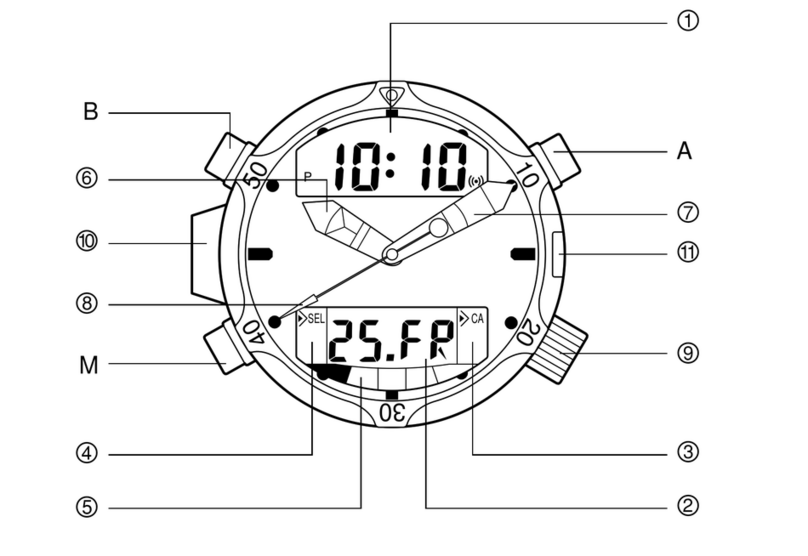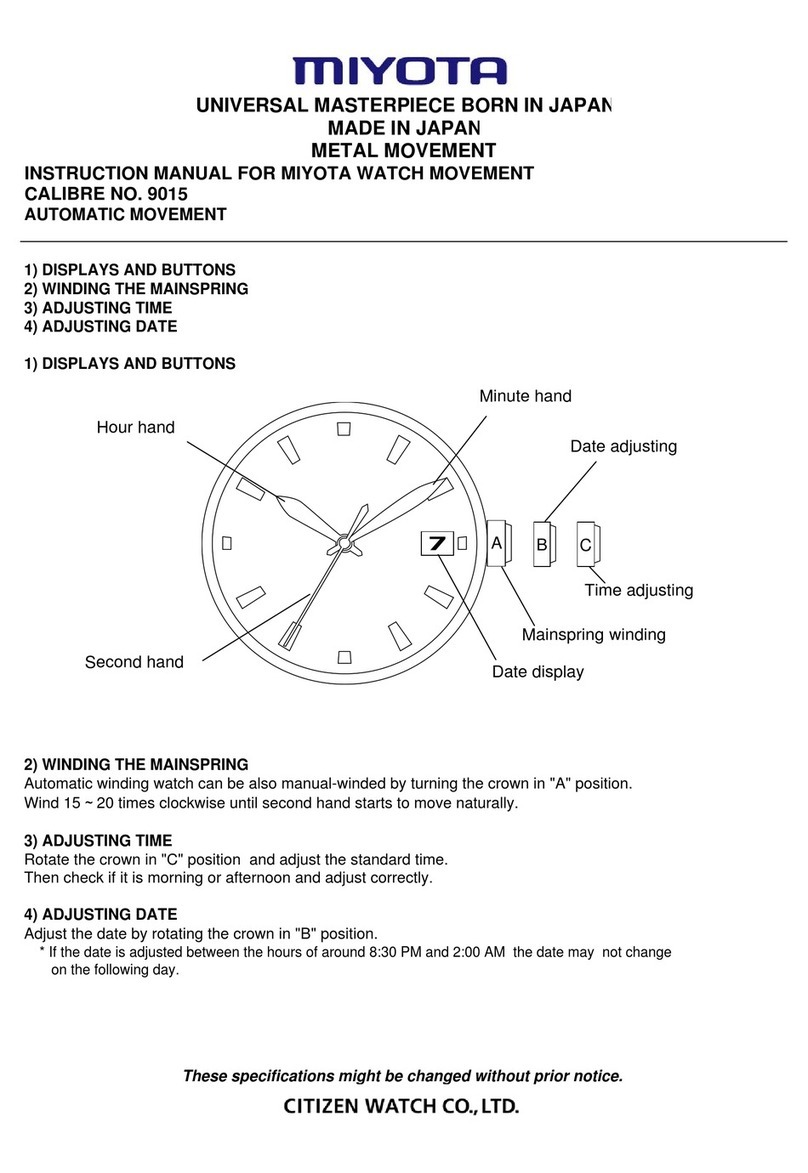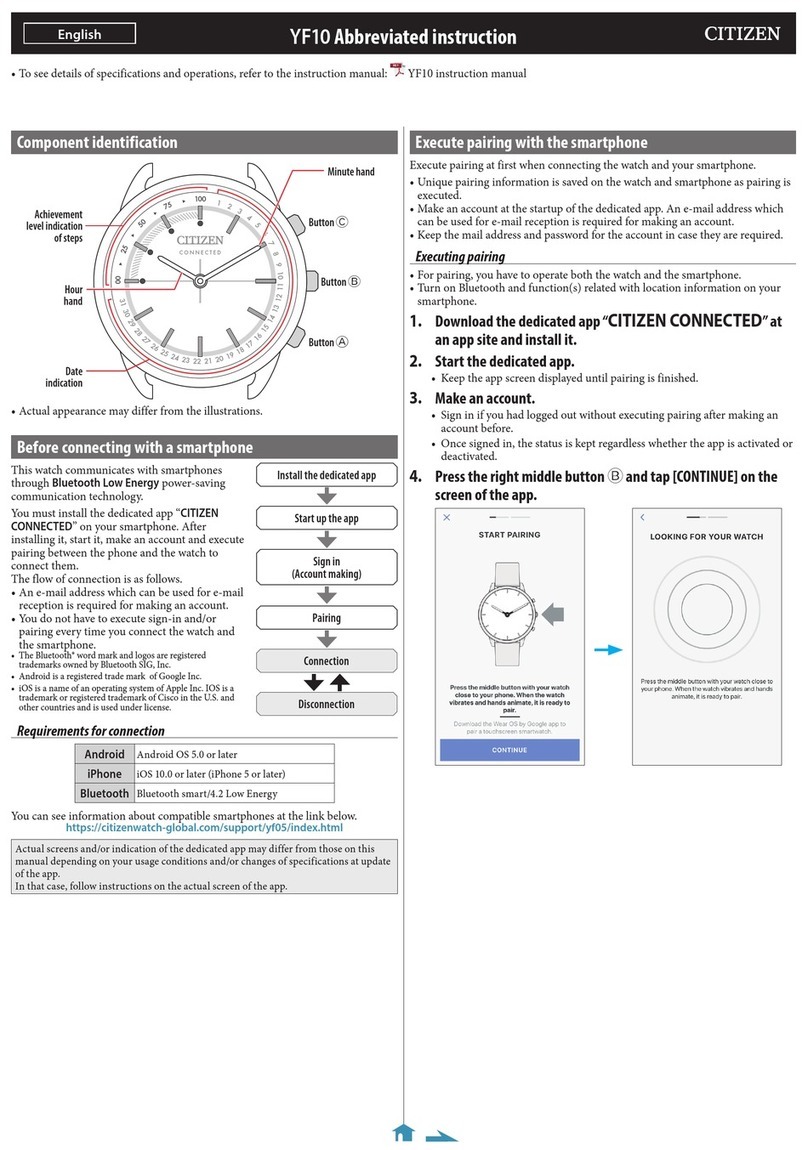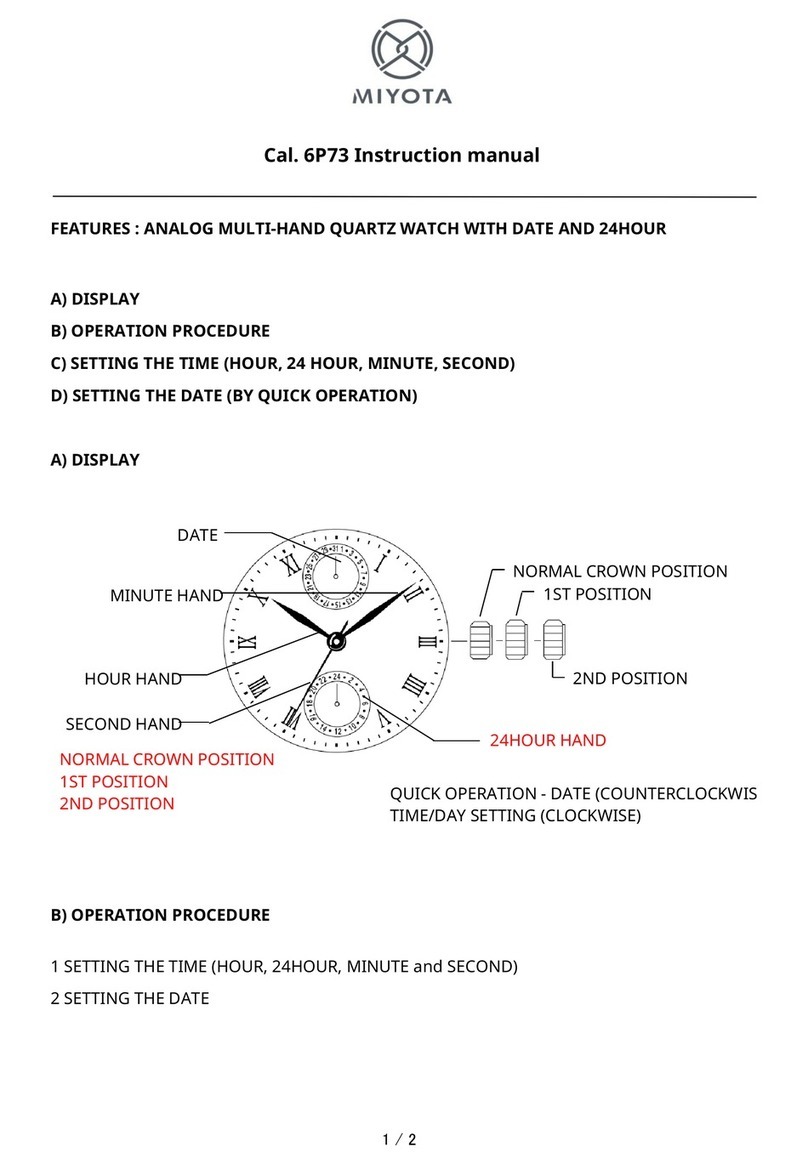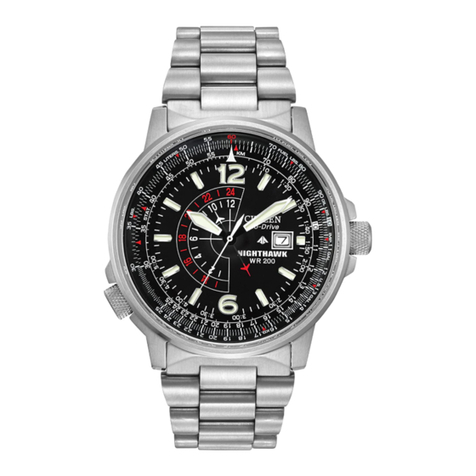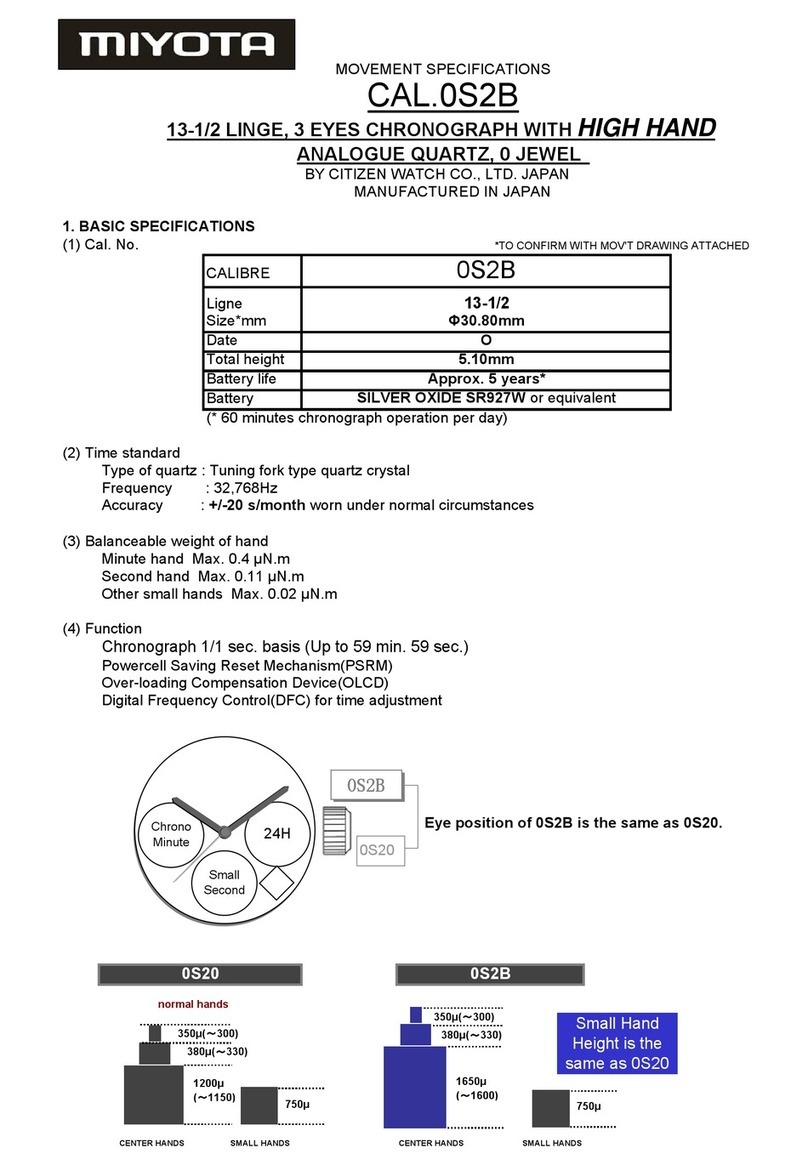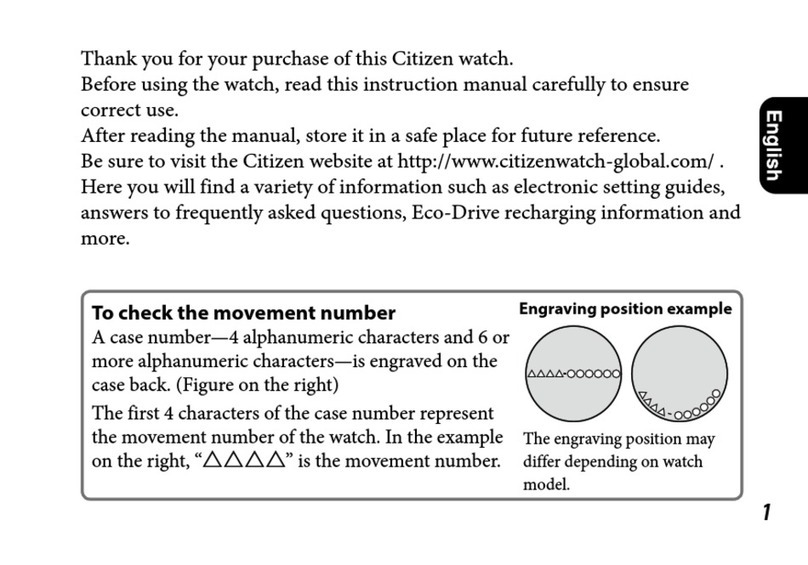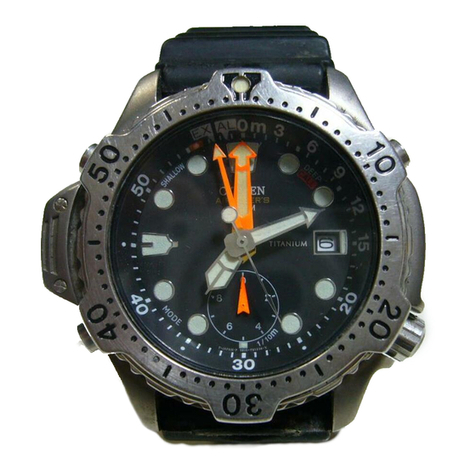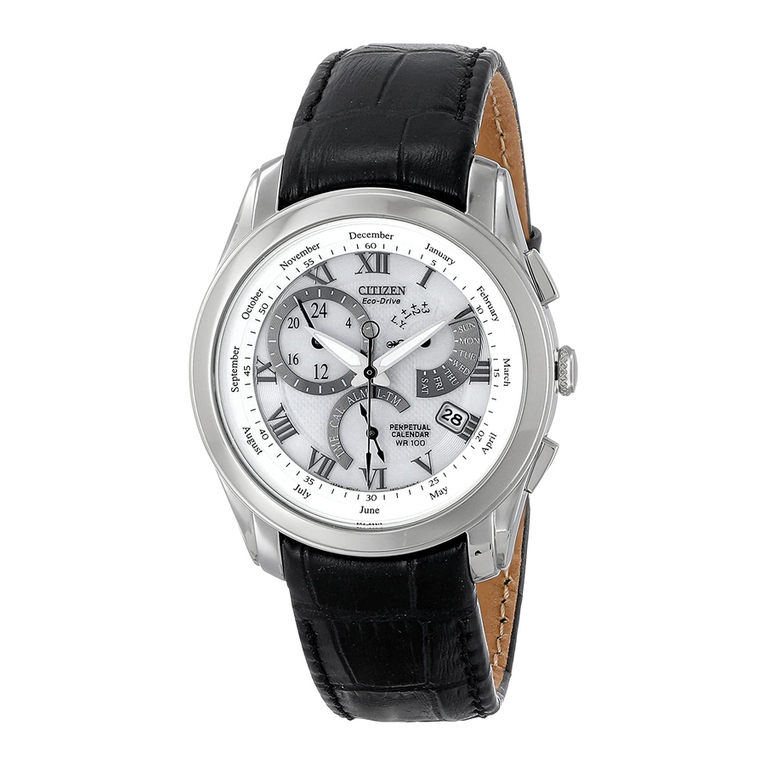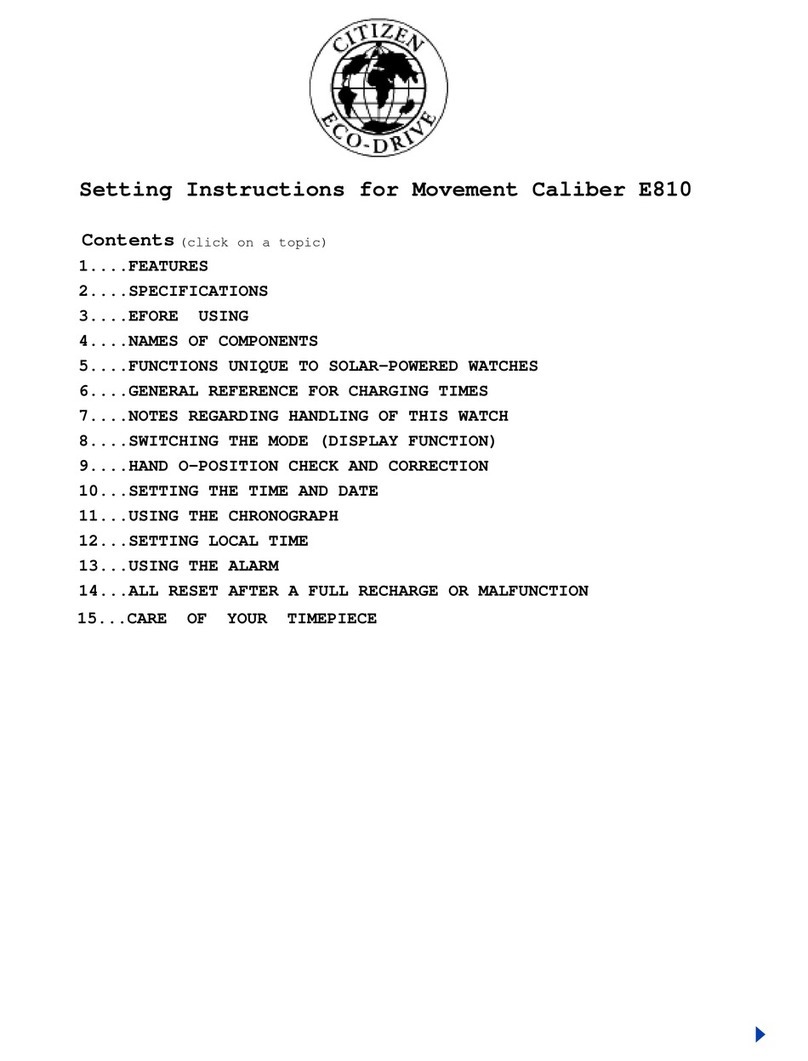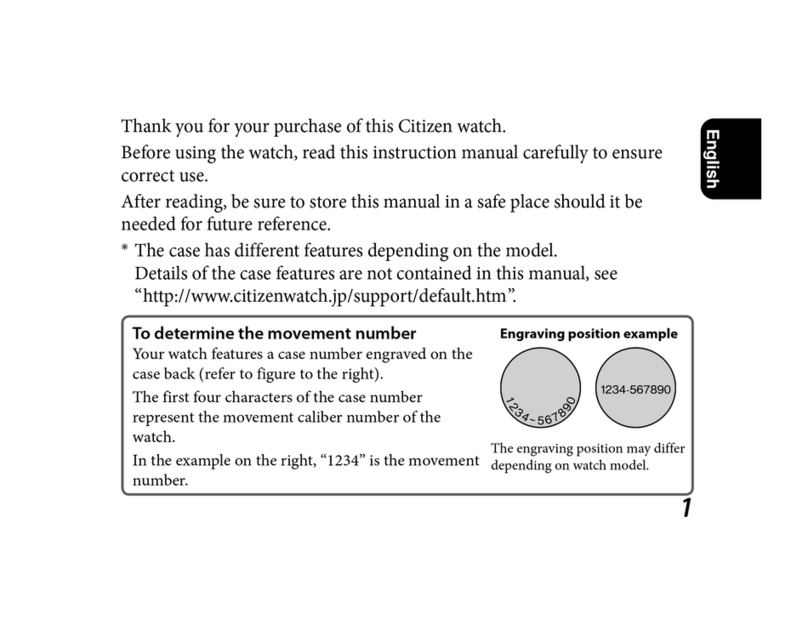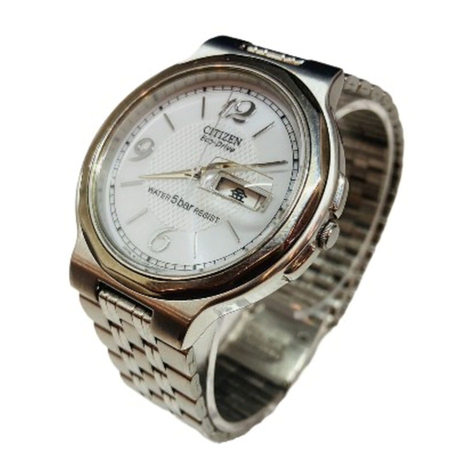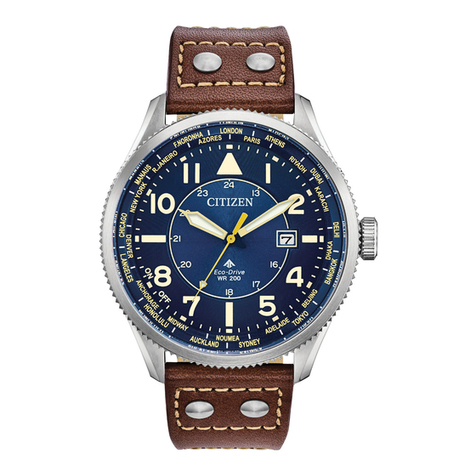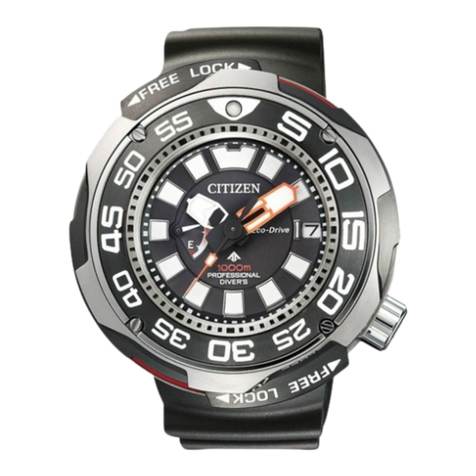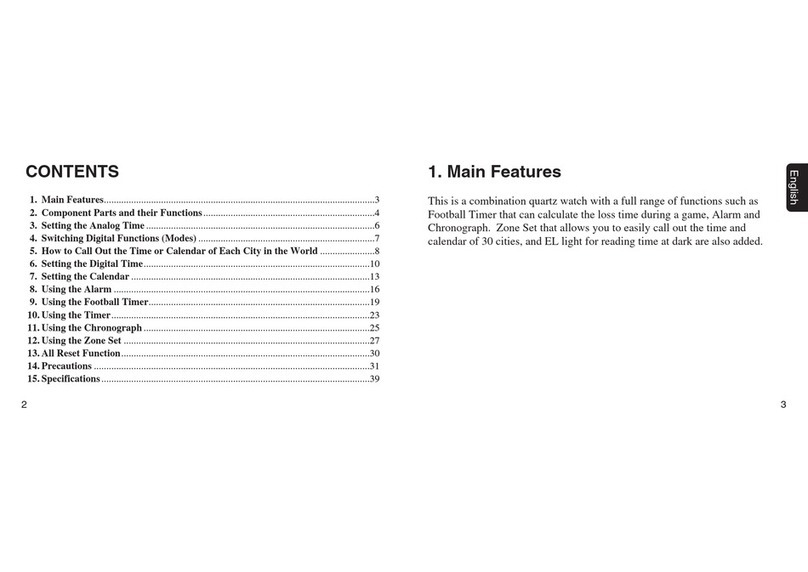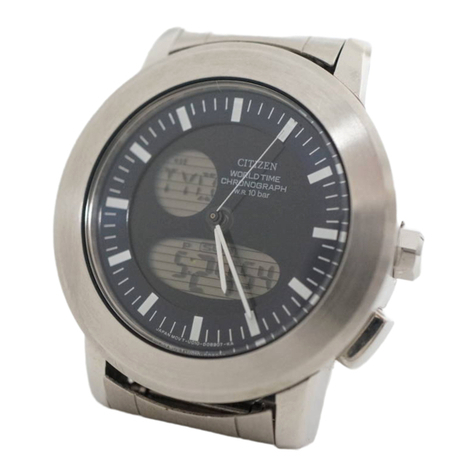• If seawater enters the watch, place the watch in a box or plastic bag and
immediately take it in for repair. Otherwise, pressure inside the watch will increase,
and parts (crystal, crown, buttons, etc.) may come off.
CAUTION: Keep your watch clean.
• Leaving dust and dirt deposited between the case and crown may result in difficulty
in pulling the crown out. Rotate the crown while in its normal position, from time to
time, to loosen dust and dirt and then brush it off.
• Dust and dirt tend to be deposited in gaps in the back of the case or band.
Deposited dust and dirt may cause corrosion and soil your clothing. Clean the watch
occasionally.
Cleaning the Watch
• Use a soft cloth to wipe off dirt, perspiration and water from the case and crystal .
• Use a soft, dry cloth to wipe off perspiration and dirt from the leather band.
• To clean a metal, plastic, or rubber watchband, wash away dirt with mild soap and
water. Use a soft brush to remove dust and dirt jammed in the gaps in the metal
band. If your watch is not water-resistant, take it to your dealer.
NOTE: Avoid using solvents (thinner, benzine, etc.), as they may mar the finish.
17
• Water-resistance for daily use (to 3 atmospheres): This type of watch is water-
resistant to minor exposure to water. For example, you may wear the watch while
washing your face; however, it is not designed for use underwater.
• Upgraded water-resistance for daily use (to 5 atmospheres): This type of watch is
water-resistant to moderate exposure to water. You may wear the watch while
swimming; however, it is not designed for use while skin diving.
• Upgraded water-resistance for daily use (to 10/20 atmospheres): This type of watch
may be used for skin diving; however, it is not designed for scuba or saturated
diving using helium gas.
CAUTION
• Be sure to use the watch with the crown pressed in (normal position). If your watch
has a screw-type crown, be sure to tighten the crown completely.
• Do NOT operate the crown with wet fingers or when the watch is wet. Water may
enter the watch and compromise water-resistance.
• If the watch is used in seawater, rinse with fresh water afterward and wipe with a dry
cloth.
• If moisture has entered the watch, or if the inside of the crystal is fogged up and
does not become clear within a day, immediately take the watch to your dealer or
Citizen Service Center for repair. Leaving the watch in such a state will allow
corrosion to form inside.
16

